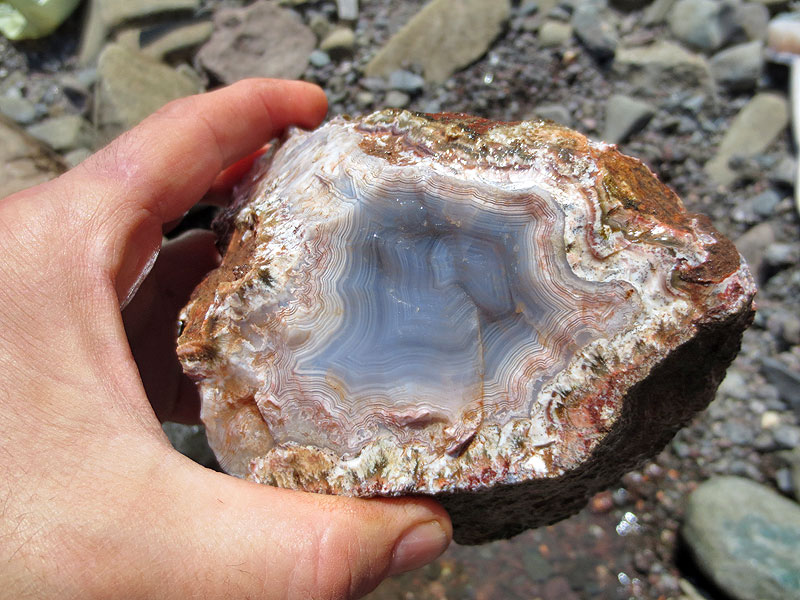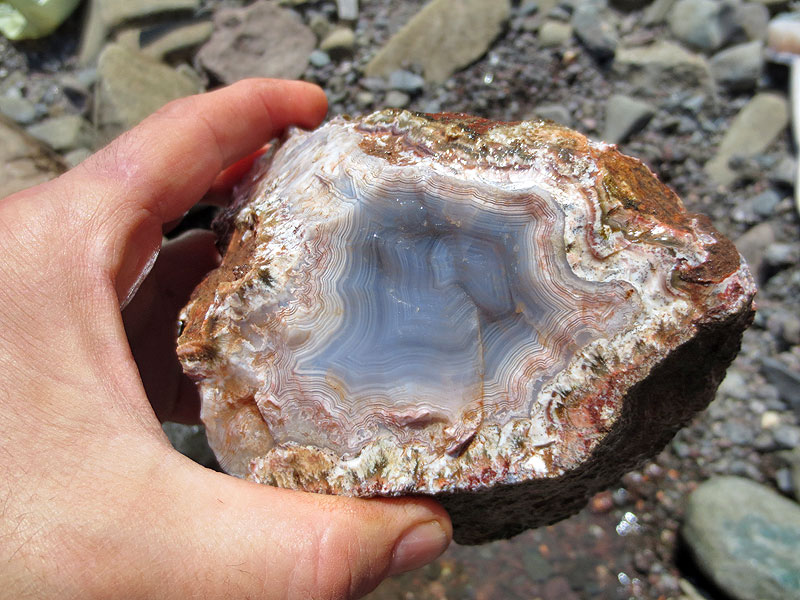We love getting questions about #mining, #minerals and #geology! We were asked about #gemstones in #NovaScotia. Here’s our answer:
#nspoli #cbpoli #capebreton
#nspoli #cbpoli #capebreton

Gemstones that are usually considered “precious stones” are diamonds, rubies, sapphires and emeralds. All other gemstones are considered “semi-precious” (i.e. agate, amber, amethyst, jade, pearl, etc.)
#nspoli #cbpoli #capebreton #NovaScotia
#nspoli #cbpoli #capebreton #NovaScotia

These definitions date from the 1800s and they are subjective, not scientific. There is not universal agreement with them, but we mention them to point out that there is usually a distinction made between precious and semi-precious stones.
#nspoli #cbpoli #capebreton #NovaScotia
#nspoli #cbpoli #capebreton #NovaScotia

Even the definition of gemstone isn’t clear. Many stones are considered gems but the term does not have a technical definition.
#nspoli #cbpoli #capebreton #NovaScotia
#nspoli #cbpoli #capebreton #NovaScotia

Interestingly, some gemstones are not actually minerals. By definition, a mineral must be created inside the earth but a pearl’s coating is created in a mollusk and amber starts out as tree resin. Still, both pearl and amber are considered gemstones.
#nspoli #cbpoli #NovaScotia
#nspoli #cbpoli #NovaScotia

#NovaScotia doesn't have a history of commercial mining for gemstones but there are many that can be found, and there are many great places in t#NS for rockhounding. Small-scale gathering of gems is done to collect or sell them or to turn them into jewelry.
#nspoli #cbpoli
#nspoli #cbpoli

Gemstones that can be found in #NovaScotia include agate, zeolite, garnet, amethyst, quartz crystals, anatase, rutile, cassiterite, sphalerite, phosphates and many others.
Let’s talk about agate since it was declared Nova Scotia’s provincial gemstone in 1999.
#nspoli #cbpoli
Let’s talk about agate since it was declared Nova Scotia’s provincial gemstone in 1999.
#nspoli #cbpoli

Agate is a variegated (it has different colours) and banded form of quartz with a beautiful translucency. It is used for jewellery and as a collectible.
Agate is common in the basalt flows of the Jurassic Period in Nova Scotia.
#nspoli #cbpoli #capebreton #NovaScotia
Agate is common in the basalt flows of the Jurassic Period in Nova Scotia.
#nspoli #cbpoli #capebreton #NovaScotia

As supercontinent Pangea broke up 200 million years ago, lava came out of cracks in earth's crust and formed the Annapolis Valley’s North Mountain – it’s flood basalt, or long, continuous sheets of hardened lava overlying softer sandstone.
#nspoli #cbpoli #capebreton #NovaScotia
#nspoli #cbpoli #capebreton #NovaScotia

Agates formed in cavities, called vesicles, in these ancient lava flows. Trapped gases in the lava later escaped, leaving hollow cavities or pockets behind. Cracks and seams (more cavities) in the basalt also formed as adjoining sections of lava cooled at different rates.
#nspoli
#nspoli

These empty cavities filled with fluids rich in dissolved and suspended quartz molecules (silica), as well as other mineral impurities. Over time, the silica molecules began to form miniature fibrous microcrystals that attached to the sides of the cavities.
#nspoli #cbpoli
#nspoli #cbpoli
During the filling-in process other mineral impurities collected, forming different bands.
This pattern repeated until the entire cavity was filled in, or until all the silica-rich solution was used up. The stones that formed in those cavities are the agates we find in #NS today.
This pattern repeated until the entire cavity was filled in, or until all the silica-rich solution was used up. The stones that formed in those cavities are the agates we find in #NS today.

Places in the #BayofFundy like #Blomidon and Amethyst Cove (great name!) are favourite gemstone collecting areas.
#nspoli #cbpoli #capebreton #NovaScotia
#nspoli #cbpoli #capebreton #NovaScotia

For example, Fundy is world-famous for its zeolites, a group of about 40 related minerals. One of them, mordenite, is named for Morden, NS, where it was discovered in 1864. It's used to clean up chemical spills, in animal feed and for water treatment.
#nspoli #cbpoli #NovaScotia
#nspoli #cbpoli #NovaScotia

Waste dumps at former mines are often good spots for rockhounding too, but be safe. For example, we understand the former operators of the East Kemptville tin mine laid out their waste dump to facilitate rockhounding and it’s a great site for micro-minerals.
#nspoli #cbpoli
#nspoli #cbpoli

Other neat spots include an old quarry at Bolyston, #Guysborough, that is known for really nice rose quartz crystals.
On Gerrish Mountain, near Five Islands, is the New Britain quartz crystal mine where, it is rumoured, the military extracted quartz crystals for radios in #WWII.
On Gerrish Mountain, near Five Islands, is the New Britain quartz crystal mine where, it is rumoured, the military extracted quartz crystals for radios in #WWII.

Regarding precious stones, there are corundum in Frenchvale, Cape Breton. They look like rubies (rubies are gem-quality corundum) but they don’t quite meet the technical specifications of rubies.
#nspoli #cbpoli #capebreton #NovaScotia
#nspoli #cbpoli #capebreton #NovaScotia

Similarly, Nova Scotia has numerous beryl occurrences that look like emeralds (gem-quality beryl) but again, they don’t quite meet the technical specs. Still, they look like the real thing.
#nspoli #cbpoli #capebreton #NovaScotia
#nspoli #cbpoli #capebreton #NovaScotia

This post is not a comprehensive list of sites or gems in Nova Scotia – there are just too many! These two web sites are excellent resources for anyone wanting more info: novascotiamineralandgemsociety.com and nsminerals.atspace.com/index.html
#nspoli #cbpoli #capebreton #NovaScotia
#nspoli #cbpoli #capebreton #NovaScotia

• • •
Missing some Tweet in this thread? You can try to
force a refresh



























